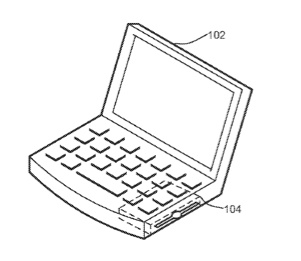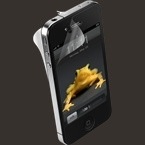A new patent (number 20120020644) from Apple at the U.S. Patent & Trademark Office for playing data from an optical media drive.
The patent relates generally to optical media drives and to systems using such optical media drives; as well as to improved methods of operating such optical media drives. It’s a bit surprising to see this patent, as most evidence indicates that Apple will phase out built-in optical drives on most Macs. But perhaps this involves a revamped, external SuperDrive.
In an example embodiment, the disclosure relates to playing data from an optical media drive. Example embodiments provide various techniques for playing data from an optical media drive. The optical media drive may detect certain media access information for use in accessing optical media. This media access information is stored a non-volatile memory.
The optical media drive then retrieves the media access information from the non-volatile memory once the optical media drive is reactivated after deactivation. The optical media drive may then read from the optical media using the provided media access information. Paul J. Wehrenberg is the inventor.
Here’s Apple’s background and summary of the invention: “An optical media drive facilitates reading of different types of data that may be stored on an optical media, of which Compact Disks (CD’s) and Digital Versatile Discs (DVD’s) are common examples. The optical media is a circular disk having a generally flat surface, with data stored in the form of pits formed on the flat surface of the disk, or in some other optically identifiable form.
“The optical media drive uses light (e.g., a laser) to read data stored on the optical media, for use by a processing system, and in some cases to write data to the optical media. In the example case of video data, the optical media drive reads the video data from the optical media and passes the video data to a video player, which may be implemented in either hardware or software. The video data is passed to the video player in a streaming fashion, where the video data may be decoded, decompressed, and displayed as video/audio output.
“In many conventional systems, during playback of video, an optical media drive is configured to constantly read the video data at a rate generally equivalent to the rate at which the video data is processed or displayed. As a result, the optical media drive rotates the optical media at a constant rate throughout the playback of the video, thereby requiring that the optical media drive operate continuously for the duration of the video playback. Such systems thereby draw power continuously during video playback and this continuous power consumption may, for example, quickly reduce the charge of a battery when viewing the video using a battery-powered video player.
“Additionally, systems have been proposed for reading data having a limited data usage rate, such as video data, from an optical media drive into a buffer, and then placing the optical media drive in a lower power state until the contents of the buffer need to be replenished in order to continue video playback. However, such systems typically still continue to draw power from the optical media drive during video playback even in the lower power state.
“Additionally, once many such systems are revived from the lower power state, the systems typically require reacquiring of access information regarding the loaded optical media, before reading of the desired data may be resumed. Either of these operational situations leads to less than optimal power management for use of the optical media drive. However, power management can be a significant concern when operating many systems, particularly ones that operate from a finite capacity power source, such as a battery.
“Accordingly, embodiments of the invention provide new methods and apparatus for power management of optical media drives and for controlling the operations of such optical media drives during read operations. These methods and apparatus offer particular advantages to read operations subject to relatively controlled rates of use of the data read from the optical media, such as multimedia data.
“Example embodiments provide various techniques for playing data from an optical media drive. In general, examples of the invention as described herein allow for efficient reduction of power consumption by optical media drives. The examples are described herein primarily in the context of reading of audio, video, audio/video and other multimedia data files, as such data typically has a fixed rate at which the data may be played back, or otherwise utilized, and thus provides a particularly useful context for describing the benefits of the described invention.
“When an optical media is loaded into an optical media drive, the optical media drive may detect certain media access information for use in accessing the optical media. Such media access information may include attributes of the optical media and parameters used by the optical media drive to access the particular loaded optical media. The optical media drive stores this media access information in a memory that is configured to retain the media access information even after the optical media drive is deactivated.
“The optical media drive reads the data from the optical media at a data read speed greater than a playback speed used in the playback of the data. As an example, the optical media drive can read the optical media at its maximum data read speed. This read data is initially transferred to a buffer until the buffer is filled or another threshold is reached; at which time the optical media drive is deactivated.
“With the optical drive deactivated, a multimedia player application or other software application reads or plays the data from the buffer until the buffer is nearly empty or another threshold is reached. At this time, the optical media drive is reactivated and the media access information previously stored in the memory is provided to the optical media drive. The optical media drive may then immediately read from the optical media using the provided media access information without a requiring the media access information to be redetected.”



